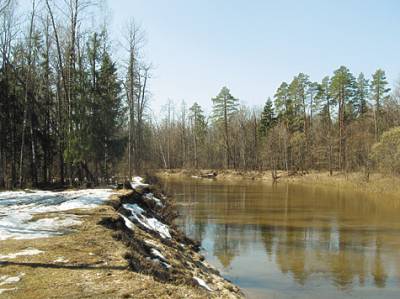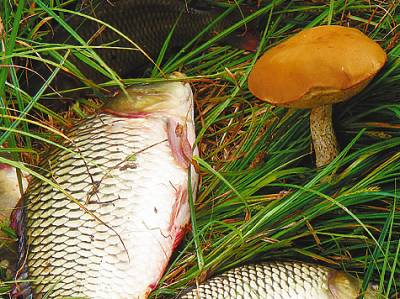
Summer Karasevich ponds where warm water fish sated natural food, not once had to observe, that in these conditions, some anglers successfully catch lazy and finicky carp, most settle for the rare bites. Of course, the situation of the losers can be created by mistakes in the selection of lures and nozzles, but most often it’s determined by the wrong construction of a float snap-in, under carp and the impossibility of control tackle.
Thus, the most popular among the lovers of sport fishing for carp since ancient times is the float rod. From proper equipment depends almost all the success of fishing. What good is a great lure and a complete range of nozzles, if the angler notices a careful summer of bites of well-fed fish? Fish alarming rough tackle not complying with the conditions of fishing activity and the size of fish; presence of wind, waves, currents, depth and water clarity; the nature of the seabed and other factors).
Compared with the known Amateur equipment float fishing rods, sports gear shows its distinct advantage at the expense of the ultra-high sensitivity to the bites. It is possible to achieve due to the complex shapes of sports float with multiple attachment points to the line. Such a set is easily controllable, and distributed system shipping more naturally takes the fish head.
A typical vehicle with a float rod with a dull (without coil) snap-in for catching on reservoirs with weak a current or without it, are shown in Fig. 1.

Fig.1.
Typical sports equipment for catching carp:
1 — antenna; 2 — ring;
3 — the body of the float; 4 — the keel;
5 — sleeve; 6 — line;
7 — the main ogruzka;
8 — was; 9 — leash;
10 — hook.
With such gear isn’t too much of a problem when fishing conditions are calm, that is not, for example, strong crosswinds, which intensively moves snap-on lured to the area — fed carp taking bad fast-moving feed. That can be done in this case, the angler to stabilize gear? There are at least two ways. The first of these, the easiest to install on the line between the float and the rod tip a little lead pellet weighing 0.1-0.2 g, which quickly drown the line, freeing it from the effects of wind and waves. But this method is best implemented with a small depth of fishing, otherwise it will be difficult to strike because of the deep lying under the water line.
The second method is more complicated: it is necessary to make a special float which can be called “needle”. Its design is determined by the following considerations. The wind blows only the thin upper layer of water, which slides over the lower stationary or slow moving in the opposite direction (wind circulation) in the water layers. Velocity plot for this process is shown in Fig. 2.

Fig. 3.
The float “needle”:
1 — antenna; 2 — ring;
3 — the body of the float; 4 — the keel;
5 — sleeve.
Normally, this movement of water is retained up to the formation of steep waves and the thickness of the moving upper layer of 5-15 cm, so the float needle should have a length of from 20 to 30 cm with a maximum diameter of 5 mm. the Upper, thinner part will be in the moving layer, and the bottom, wide in still water and to resist the movement. The float “needle” is schematically depicted in Fig. 3. It is clear that to carve it out of balsa very difficult. At worst, such a float can be made of dried fruit to the cone of the stem or cattail millet.
Closer to autumn, the carp have come out to feed in the shallow coastal waters and is the main depth of the reservoir, often a few dozen meters from the shore. In this case, a very effective sports float tackle for long casting.
But this situation exists and another sporting method of fishing (by the way, he rescues fisherman and in difficult weather conditions) — fishing without a float fishing-rod of type quiver-type”, where a bite alarm is a soft brightly coloured tip. Ideal for long cast without a float and medium grade spinning — here you will need the electronic bite alarm or signal a weight that is hung on the line between the first ring and the coil. English anglers for better fixation of the barely visible vibrations of the rod tip put in front of him the screen is dark, lined with white vertical lines.
Mounted similar tackle without a float is easy: at the end of the line on the swivel is tied a conical or pear-shaped sinker weighing 10-40 g (depending on the capabilities of the rod, casting distance, the thickness of line, intensity of wind and currents), 20 cm above it at a distance of 20-40 cm from each other on vertluzhnoj set 2-3 short (10-15 cm) liner with hooks.
Experience autumn and early spring carp fishing tackle this on ponds has shown its amazing efficiency, mobility and sensitivity. It requires the angler good fitness, accuracy, coordination, good reactions and is quite athletic. Bait is usually not applied, though not excluded. It is important with the help of a few casts to determine the location of the densest concentrations of carp, where the takes are almost immediately after casting.
In the hot season in mid-summer, the situation is different: carp splashing around the pond, and from the bottom almost does not bite, and probably very few anglers tried to fish it on top with a small descent, but in vain. Only the tackle for the fishing must be light (carrying capacity of the float of 0.4-0.8 g), distributed ogruzka to head feel as normal as possible immersed in the water, and loud slaps on the water with heavy tackle did not frighten the fish. The descent is usually set between 0.5 to 1 meter.
Each casting tackle must be accompanied by a small portion of light aromatic mixture. After the float upright (ends the transaction with the dip), should begin to perform a short smooth action of tackle with periodic stops. The same fishing technique should also apply when fishing from the bottom, creating a pre-greased “track” from the depths to the shore.








